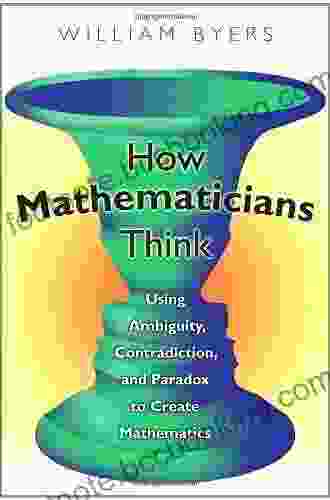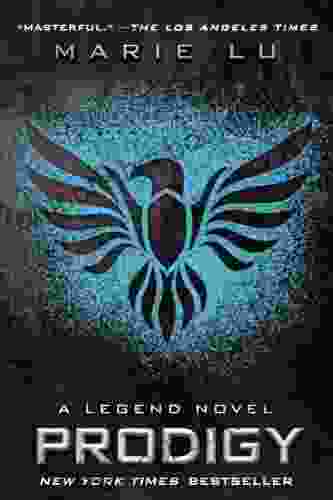Unveiling the Intriguing Potential of Ambiguity, Contradiction, and Paradox in Mathematics

The realm of mathematics is often perceived as a bastion of certainty and precision, where every theorem is meticulously proven and every equation yields an indisputable truth. Yet, beneath this veneer of exactitude lies a fascinating paradox: the power of ambiguity, contradiction, and paradox in driving mathematical discovery and creativity.
In this comprehensive article, we will delve into the enigmatic world of using ambiguity, contradiction, and paradox to create mathematics. We will explore how these seemingly paradoxical concepts can serve as catalysts for profound insights, groundbreaking theorems, and the very fabric of mathematical knowledge itself.
4.3 out of 5
| Language | : | English |
| File size | : | 3163 KB |
| Text-to-Speech | : | Enabled |
| Screen Reader | : | Supported |
| Enhanced typesetting | : | Enabled |
| Print length | : | 425 pages |
Ambiguity: The Stepping Stone to Uncertainty and Discovery
Ambiguity, in its essence, is the presence of multiple interpretations or meanings within a concept or statement. In mathematics, ambiguity can introduce an element of uncertainty that challenges our preconceived notions and pushes the boundaries of knowledge.
For instance, the concept of infinity has long been a subject of ambiguous interpretation. Ancient Greek philosophers debated its nature, with some arguing that it is a well-defined entity while others maintained its paradoxical and incomprehensible essence. This ambiguity fueled centuries of mathematical exploration, leading to the development of different theories of infinity and the discovery of unexpected properties.
Contradiction: The Birthplace of Logical Truths and Formal Systems
Contradiction, on the surface, seems antithetical to the very foundations of mathematics. However, within the controlled environment of formal systems, contradictions can serve as the genesis of profound truths.
One of the most famous examples is the discovery of non-Euclidean geometries. Euclid's fifth postulate, which states that through a given point, only one parallel line can be drawn to a given line, had long been accepted as an unquestionable truth. However, in the 19th century, mathematicians such as Nikolai Lobachevsky and János Bolyai explored the possibility of alternative geometries where this postulate did not hold. This led to the birth of non-Euclidean geometries, which revolutionized our understanding of space and the foundations of mathematics itself.
Paradox: The Catalyst for Unraveling Deep Structures and Challenging Conventions
A paradox is a statement that seemingly contradicts itself. In mathematics, paradoxes can arise from the interplay of seemingly incompatible concepts or the limits of our understanding.
One of the most well-known paradoxes in mathematics is the Banach-Tarski paradox. This paradox states that, under certain conditions, it is possible to decompose a solid ball into a finite number of disjoint sets and then reassemble these sets into two balls of the same size as the original. The paradox challenges our intuitive understanding of volume and the nature of infinity.
The Role of Ambiguity, Contradiction, and Paradox in Creating Mathematics
So, how do ambiguity, contradiction, and paradox contribute to the creation of mathematics? These concepts play several crucial roles:
- Stimulating Curiosity and Exploration: Ambiguity and contradiction can ignite curiosity and inspire mathematicians to explore uncharted territories of thought.
- Challenging Assumptions and Conventions: Paradoxes can challenge deeply held beliefs and force mathematicians to re-examine the foundations of their subject.
- Introducing New Perspectives and Approaches: The exploration of ambiguity, contradiction, and paradox can lead to the development of new mathematical theories and approaches.
- Synthesizing Diverse Ideas: Ambiguity and contradiction can serve as a bridge between seemingly disparate mathematical concepts, fostering unexpected connections and insights.
Examples of Mathematical Breakthroughs Driven by Ambiguity, Contradiction, and Paradox
Throughout the history of mathematics, numerous groundbreaking discoveries have been sparked by the embrace of ambiguity, contradiction, and paradox. Here are a few notable examples:
- The Development of Calculus: The concept of the limit, a cornerstone of calculus, emerged from the exploration of paradoxes involving infinite processes.
- The Creation of Abstract Algebra: The development of abstract algebra was influenced by the exploration of the paradoxes associated with group theory.
- The Birth of Gödel's Incompleteness Theorems: Gödel's incompleteness theorems, which shook the foundations of mathematics, were inspired by the examination of paradoxes in logic.
Ambiguity, contradiction, and paradox, far from being obstacles in mathematics, are essential ingredients that drive discovery, challenge conventions, and shape the very fabric of mathematical knowledge. By embracing these seemingly paradoxical concepts, mathematicians can unlock the potential for profound insights, groundbreaking theories, and the expansion of our understanding of the world around us.
The book "Using Ambiguity Contradiction And Paradox To Create Mathematics" delves deeper into the fascinating interplay between these concepts and the creative process in mathematics. It provides numerous examples, historical anecdotes, and thought-provoking exercises that will captivate anyone interested in the intersection of logic, creativity, and the nature of mathematical knowledge. Whether you are a student, a mathematician, or simply someone fascinated by the enigmatic world of mathematics, this book will take you on an unforgettable journey into the paradoxical heart of mathematical discovery.
4.3 out of 5
| Language | : | English |
| File size | : | 3163 KB |
| Text-to-Speech | : | Enabled |
| Screen Reader | : | Supported |
| Enhanced typesetting | : | Enabled |
| Print length | : | 425 pages |
Do you want to contribute by writing guest posts on this blog?
Please contact us and send us a resume of previous articles that you have written.
 Book
Book Novel
Novel Page
Page Chapter
Chapter Text
Text Story
Story Genre
Genre Reader
Reader Library
Library Paperback
Paperback E-book
E-book Magazine
Magazine Newspaper
Newspaper Paragraph
Paragraph Sentence
Sentence Bookmark
Bookmark Shelf
Shelf Glossary
Glossary Bibliography
Bibliography Foreword
Foreword Preface
Preface Synopsis
Synopsis Annotation
Annotation Footnote
Footnote Manuscript
Manuscript Scroll
Scroll Codex
Codex Tome
Tome Bestseller
Bestseller Classics
Classics Library card
Library card Narrative
Narrative Biography
Biography Autobiography
Autobiography Memoir
Memoir Reference
Reference Encyclopedia
Encyclopedia R Bruce Hoadley
R Bruce Hoadley Erika V Shearin Karres
Erika V Shearin Karres Frank Dixon
Frank Dixon Matt Omasta
Matt Omasta Frank S Ring
Frank S Ring Matt Hawkins
Matt Hawkins Frank Wilczek
Frank Wilczek Freddy Silva
Freddy Silva Martha Ruskai
Martha Ruskai Francis Borceux
Francis Borceux Miguel Serrano
Miguel Serrano Maurissa Guibord
Maurissa Guibord Marilyn Laura Bowman
Marilyn Laura Bowman Robert Kuttner
Robert Kuttner Gayl Jones
Gayl Jones Frank Morin
Frank Morin Tim Lawrence
Tim Lawrence Frank Giampaolo
Frank Giampaolo Frank Arjava Petter
Frank Arjava Petter Linford Stutzman
Linford Stutzman
Light bulbAdvertise smarter! Our strategic ad space ensures maximum exposure. Reserve your spot today!

 Curtis StewartSettle In For A Thrilling Cosy Mystery With Frances Evesham's "The Ham Hill...
Curtis StewartSettle In For A Thrilling Cosy Mystery With Frances Evesham's "The Ham Hill...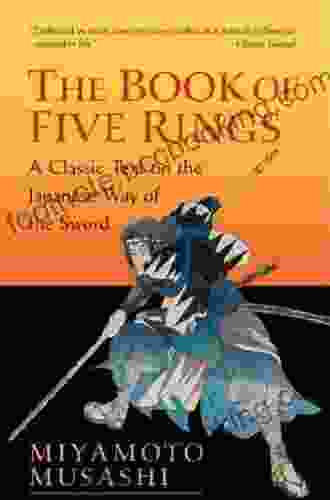
 Mitch FosterUnleash the Mastery of the Sword: Delve into the Classic Text on the Japanese...
Mitch FosterUnleash the Mastery of the Sword: Delve into the Classic Text on the Japanese...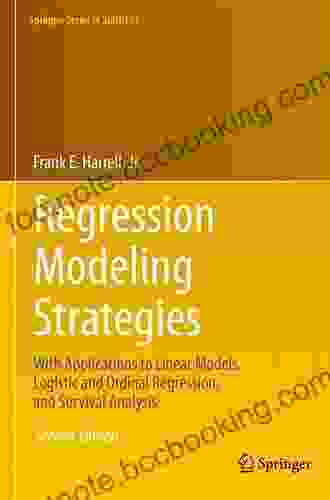
 Federico García LorcaWith Applications To Linear Models Logistic And Ordinal Regression And...
Federico García LorcaWith Applications To Linear Models Logistic And Ordinal Regression And... Robert BrowningFollow ·9k
Robert BrowningFollow ·9k Branden SimmonsFollow ·4.4k
Branden SimmonsFollow ·4.4k Milan KunderaFollow ·5.3k
Milan KunderaFollow ·5.3k Everett BellFollow ·18.8k
Everett BellFollow ·18.8k Terry BellFollow ·7.4k
Terry BellFollow ·7.4k David Foster WallaceFollow ·11.1k
David Foster WallaceFollow ·11.1k Shane BlairFollow ·8.3k
Shane BlairFollow ·8.3k Griffin MitchellFollow ·19k
Griffin MitchellFollow ·19k

 Howard Blair
Howard BlairHeroes and Villains from American History: The Biography...
David Dixon...

 Felipe Blair
Felipe BlairAn Informal History of the 1920s: Uncovering the Roaring...
The 1920s, an era...

 Howard Blair
Howard BlairHow a Peculiar Victorian Zookeeper Waged a Lonely Crusade...
In the enigmatic world of Victorian...
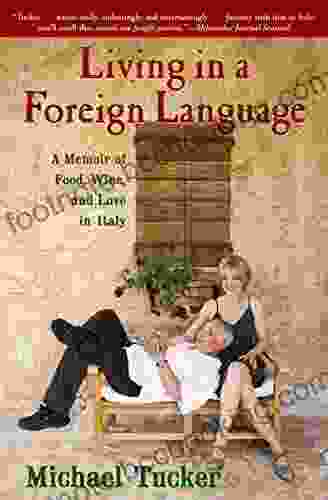
 Harold Powell
Harold PowellMemoir of Food, Wine, and Love in Italy: A Culinary...
Prepare your senses...
4.3 out of 5
| Language | : | English |
| File size | : | 3163 KB |
| Text-to-Speech | : | Enabled |
| Screen Reader | : | Supported |
| Enhanced typesetting | : | Enabled |
| Print length | : | 425 pages |


